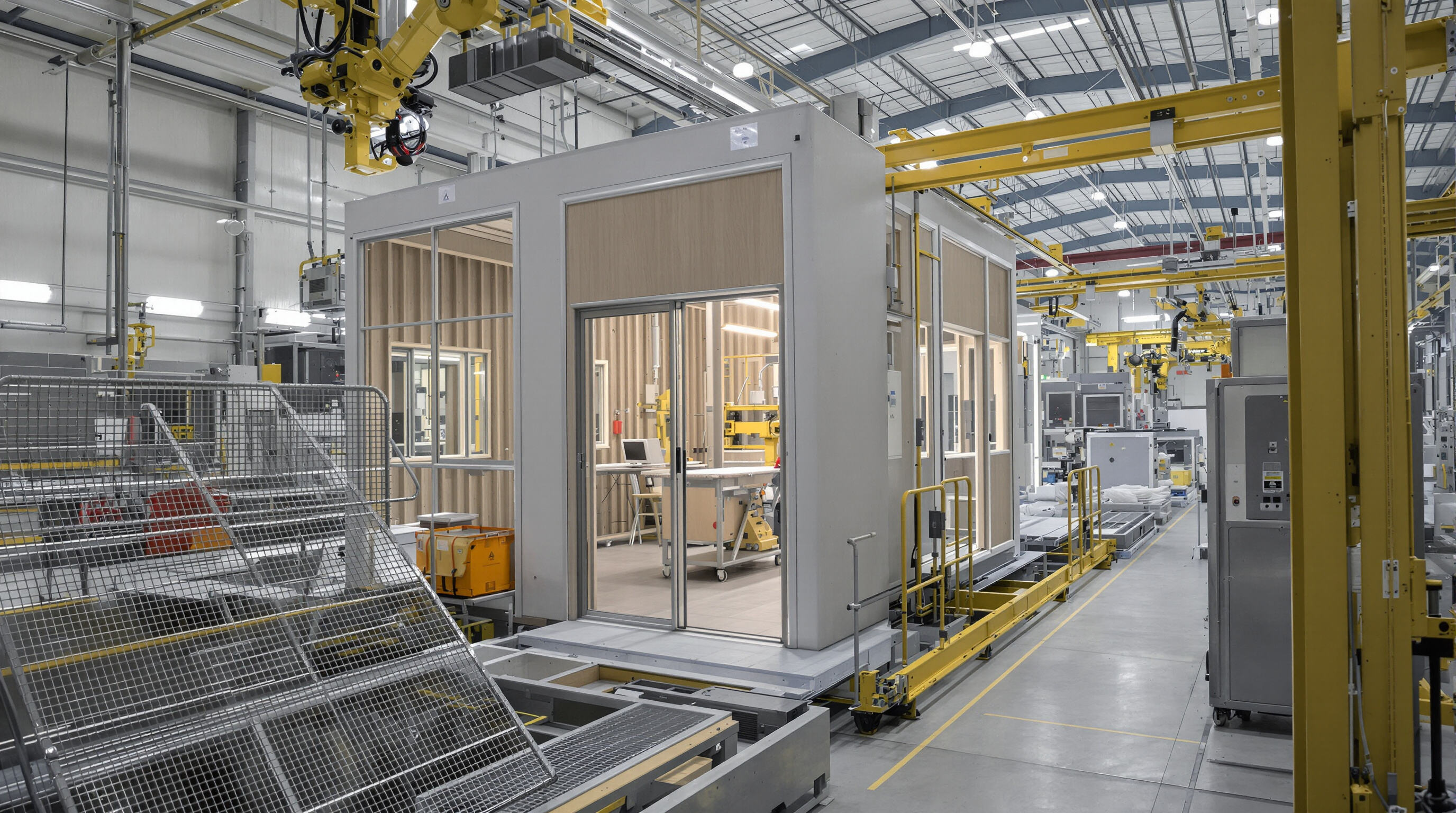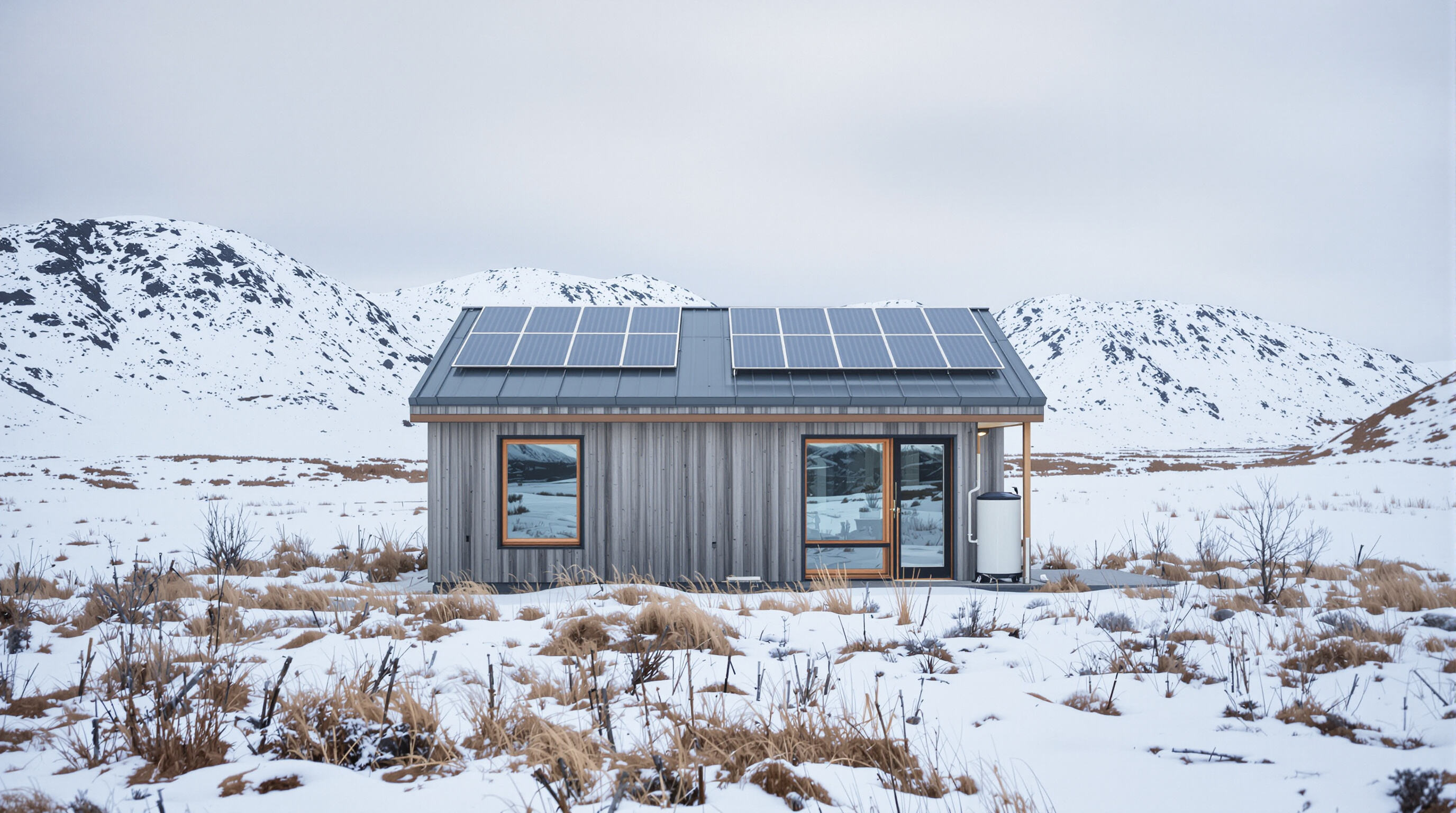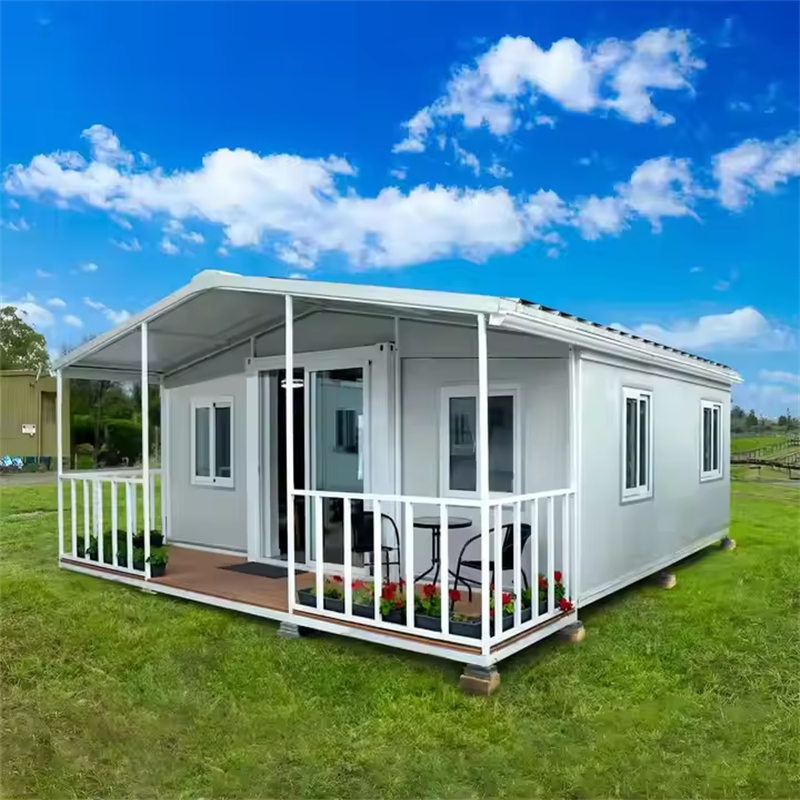Addressing Housing Shortages in Remote Regions with Prefab Homes
The Growing Housing Deficit in Isolated and Rural Communities
The housing crisis hits remote regions especially hard. After those devastating earthquakes in Turkey and Syria back in 2023, around 1.5 million people suddenly needed somewhere safe to live. Things get even worse for folks living in rural and northern areas where building projects take about 40% longer compared to city neighborhoods. Why? Not enough workers willing to travel there plus all sorts of supply chain problems. When disaster strikes or when populations surge unexpectedly, these communities struggle double. Take California's Camp Fire from 2018 as just one case study. That fire destroyed over 11,000 homes, yet TechXplore reported last year that barely 0.1% had been reconstructed using standard building techniques within a full year after the blaze.
How Prefab Housing Addresses Urgent Shelter Needs Quickly
Factory-built prefab homes slash construction timelines by 60–80%, enabling occupancy in weeks instead of years. Controlled manufacturing eliminates weather delays, while standardized designs streamline permitting. A 2023 initiative in earthquake-affected regions deployed 1,500 modular units within eight weeks—a feat unachievable with conventional building methods (ASTI, 2023).
Case Study: Rapid Deployment of Prefab Units in Northern Canada
A 2022 Arctic housing project delivered 100 energy-efficient prefab homes to Indigenous communities in Nunavut within 14 weeks. These units withstood -40°C temperatures using SIPs (Structural Insulated Panels) and featured pre-installed plumbing to bypass skilled labor shortages. The project completed 11 months faster than stick-built alternatives, housing 400 residents before winter.
Data on Reduced Construction Timelines Using Off-Site Methods
| Metric | Prefab Construction | Traditional Build | Reduction |
|---|---|---|---|
| Time to weatherproof | 3 weeks | 3–6 months | 75–83% |
| Labor hours required | 1,200 | 2,100 | 43% |
| On-site waste generated | 120 kg | 900 kg | 87% |
Data sources: Industry benchmarks from remote housing projects (2023)
Quality and Efficiency Advantages of Off-Site Construction for Remote Deployment

Quality control advantages of factory-built prefab homes
Prefab homes made in factories cut down on weather related problems by about 92%, since they're built in controlled environments rather than out in the elements (Construction Innovation Report 2024). The use of robotic welding tech along with temperature controlled manufacturing spaces means these homes stick better to building standards. That matters a lot when putting up structures in remote areas where there's no room for mistakes in the foundation work. And let's not forget the savings after installation either. Studies from modular construction show we see around 34% fewer repair issues compared to traditional on site builds. Makes sense really, when everything is manufactured under consistent conditions instead of at mercy of Mother Nature.
Reduced weather-related delays in prefabricated housing production
Indoor manufacturing cuts average project delays from 18 days to 2 days in regions with extreme climates. Parallel foundation work and module assembly enable 87% faster project completion—a critical advantage when establishing worker housing near seasonal mining operations or disaster relief zones.
Precision engineering and material efficiency in controlled settings
Laser-guided cutting systems achieve 99.8% material utilization rates, versus 82% in conventional framing. Pre-engineered plumbing and electrical chases within wall panels reduce onsite waste by 28 metric tons per 50-unit development. These efficiencies make prefab homes ideal for remote locations with limited disposal infrastructure.
Industry paradox: Higher initial costs vs. long-term savings
While factory-built units cost 12–18% more upfront, lifecycle savings average 37% over 15 years through reduced maintenance and energy use. Remote operators recoup initial investments within 6–8 years via lower transportation costs for repair crews and extended component warranties unavailable in traditional builds.
Supporting Workforce and Social Housing Needs in Regional Areas
Supporting mining, energy, and infrastructure projects with mobile housing
More and more companies are turning to prefabricated homes when they need temporary housing for workers at remote industrial sites. The mobility factor is just something regular construction simply can't offer. Take the mines in Western Australia's Pilbara area as a case in point there, the mining companies actually move entire modular housing units along with their operations as the extraction points change location. When employees don't have to commute long distances anymore, they tend to stay put longer. Workers appreciate having decent living spaces right next door to where they work, which makes sense considering how tough it gets keeping staff around these parts. Nobody wants to pack up and leave every few months just because the job site moves.
Government-led initiatives using prefab units for affordable housing
Governments across the country are turning to prefabricated housing as a way to tackle the growing problem of unaffordable homes in many regions. Take Canada's Rapid Housing Initiative for instance it's already put around 5,000 modular social housing units into communities since 2023. These factory made homes take about 60 percent less time to complete compared to regular construction methods, which is pretty impressive when we're talking about getting people into stable housing quickly. Over in Scotland things are looking similar too. Their £3.1 billion Affordable Housing Programme is making good progress on rural housing goals through something called volumetric construction. What's interesting here is how well aligned government policies have become with these new building approaches, really speeding up the acceptance of prefab techniques in areas where traditional methods just aren't cutting it anymore.
Case study: Australian outback worker accommodations
A 2024 deployment of 320 prefab dwellings across Queensland’s gas fields illustrates the model’s dual socioeconomic benefits. The project created 85 local assembly jobs while housing workers previously commuting 4+ hours daily. Post-occupancy surveys show 92% tenant satisfaction—a 33% improvement over previous “donger” camps—validating prefab homes’ role in sustainable regional development.
Sustainability and Cleantech Integration in Remote Prefab Homes

Energy-Efficient Designs Tailored for Off-Grid Environments
When building prefab homes for those out-of-the-way spots, energy saving becomes pretty much the main concern. They often incorporate things like passive solar heating, really thick insulation all around the structure, and ways to stop heat from escaping through structural connections. Some newer models are starting to include these special phase change materials inside walls and on rooftops. What this does is help keep the temperature stable inside, which means people don't need their heating and cooling systems running as much all the time. According to a report from last year's Modular Construction Conference, this can cut down on HVAC usage by nearly 40%. For folks living where electricity might be unreliable or just not available at all, these kinds of design features make a huge difference. Even when it gets brutally cold in winter or scorching hot during summer months, residents still enjoy comfortable living conditions throughout the year.
Incorporating Solar, Rainwater Harvesting, and Passive Heating Systems
Today's prefabricated housing solutions often pair solar panels with lithium iron phosphate batteries, allowing these units to generate their own power for around 70 to 90 percent of needs in regions blessed with good sunlight. The roofs are specially designed at angles that catch anywhere from 200 to 400 liters of rainwater each day across 100 square meters of surface area. This collected water goes through UV filters and gets recycled as greywater for non-drinking purposes. For colder climates, builders incorporate passive heating techniques such as Trombe walls and underground heat exchange systems. These innovations have proven effective, reducing heating expenses by nearly half when tested against conventional construction methods in extremely cold environments.
Reduced Construction Waste Through Modular Precision Manufacturing
When production happens under factory control, there's simply less need to order extra materials and far fewer mistakes at actual construction sites. The result? Around 30 to 40 percent reduction in overall waste compared to traditional building methods. Advanced robotic systems can get nearly 98% efficiency from cutting lumber, and special recycling processes manage to recover about 92% of leftover concrete mixtures. All these improvements mean each 200 square meter home built this way avoids putting roughly 12 to 18 metric tons of CO2 into the atmosphere. To put that number in perspective, it's kind of like what 50 fully grown trees would normally absorb in one year according to recent industry reports from early 2024.
Lifecycle Analysis: Prefab vs. Traditional Builds in Carbon Footprint
Research spanning 15 years across 400 remote buildings has found that prefabricated homes actually cut down on emissions quite significantly compared to conventional construction methods. During building phase alone, they emit about 15 percent less, and when people start living there, that drops another 22%. Why? Well, manufacturers design these modules so they fit better on trucks for transport, which slashes delivery emissions by roughly 60%. Plus, most come with built-in smart meters that help homeowners avoid wasting energy, cutting excess usage by nearly 40%. But there's a catch worth noting too. When it comes to lasting power in places near the coast, steel framed prefabs need almost half again as much maintenance as regular wood houses built on site according to UNEP data from last year. Something builders should definitely keep in mind before making recommendations for beachfront properties.
Overcoming Challenges in Scaling Prefab Homes for Remote Use
Logistical Barriers in Transporting Large Modules to Inaccessible Areas
Getting those big prefab home parts to really remote spots continues to be a major problem. The modules are so large they need special trucks and careful planning about which roads can handle them. When there are mountains around or no roads at all, builders tend to break down these modules into smaller pieces that can be moved separately and then put together later on site. Some places actually rely on helicopters to get materials there, even though each flight costs anywhere from thirty five thousand to eighty thousand dollars. This happens quite a bit in Alaska, especially during winters when regular roads become completely impassable because of snow and ice. Despite the high price tag, many construction firms find it worth the expense just to complete projects in these tough to reach areas.
Local Regulatory Hurdles and Building Code Compliance Issues
When different regions have their own building codes, it typically adds anywhere from four to eight weeks to project timelines, especially when requirements for earthquake resistance or temperature control clash with what factories can produce. According to recent industry data from around 2025 looking at prefab housing trends, working together on zoning laws makes a big difference. Manufacturers teaming up with local officials have managed to cut down waiting periods for approvals by nearly two thirds in some cases. Take Colorado as an example they've started allowing independent certifications for modular homes instead of going through traditional processes. This change alone has helped get houses built faster out in rural areas where access to conventional construction is limited.
Resistance from Traditional Construction Sectors
Prefab construction faces resistance from trade unions and local building contractors who worry about losing jobs, which has led to permit delays for nearly 4 out of 10 rural development projects. But things are changing as communities start seeing the benefits. Workforce training programs teaching local workers how to handle modular components have made a real difference, with acceptance rates jumping over 40% since early 2022 according to recent surveys. What's really turning heads though are those demonstration sites where homes were rebuilt 30% quicker after wildfires hit, proving that these methods can actually create opportunities rather than just taking away traditional jobs.
Workforce Training Gaps in Assembly and Maintenance of Prefab Units
Remote regions are really struggling with finding skilled workers these days. Take Northern Canada for example where there's just about 12 people qualified as modular technicians for every 100,000 residents. That's pretty thin on the ground. But things are changing thanks to virtual reality training programs. These new platforms can get workers certified in important skills such as sealing joints against harsh weather conditions and installing solar panels in roughly half the time it takes through regular apprenticeship routes. The government has been sending mobile certification teams out to Indigenous communities across Manitoba too. Since they started this initiative back in 2023, local job numbers in prefabrication projects have gone up by around 27 percent according to recent reports.
FAQ Section
What are prefab homes?
Prefab homes, or prefabricated homes, are manufactured off-site in advance, usually in standard sections that can be easily shipped and assembled. This method offers efficiency and speed compared to traditional building techniques.
Why are prefab homes beneficial for remote regions?
Prefab homes are beneficial for remote regions because they significantly reduce construction timelines, minimize the need for skilled labor onsite, and can be produced to withstand harsh weather conditions often faced in these areas.
How do prefab homes contribute to sustainability?
Prefab homes contribute to sustainability by reducing construction waste, utilizing renewable energy sources like solar panels, and using energy-efficient designs that lower overall energy consumption and emissions.
What are some challenges in implementing prefab homes?
Challenges include logistical barriers in transporting large modules, compliance with local building codes, resistance from traditional construction sectors, and gaps in workforce training to assemble and maintain these homes.
Table of Contents
- Addressing Housing Shortages in Remote Regions with Prefab Homes
- Quality and Efficiency Advantages of Off-Site Construction for Remote Deployment
- Supporting Workforce and Social Housing Needs in Regional Areas
- Sustainability and Cleantech Integration in Remote Prefab Homes
- Overcoming Challenges in Scaling Prefab Homes for Remote Use
- FAQ Section

